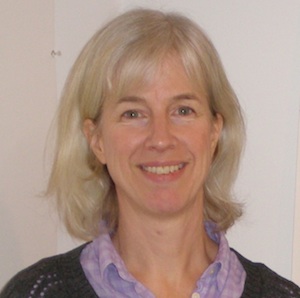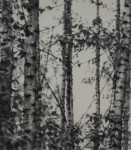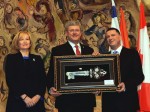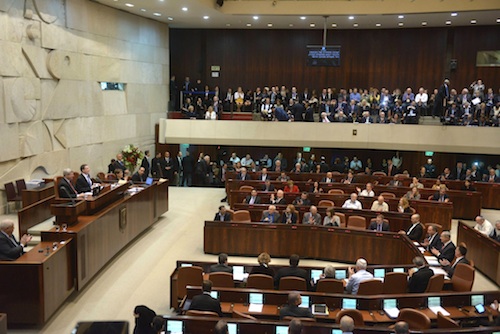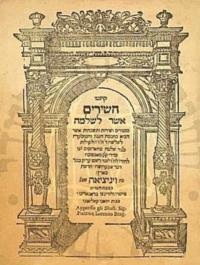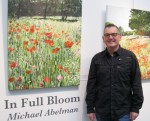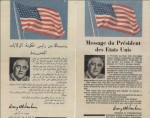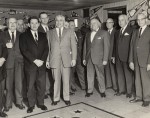The Children’s Hearing and Speech Centre of British Columbia. (photo from childrenshearing.ca)
Imagine not being able to hear. The silence. The isolation. Now imagine the sounds of kids singing, playing, asking questions at story time – even though they are deaf or hard of hearing. These and other happy sounds filled the halls and classrooms of the Children’s Hearing and Speech Centre of British Columbia when the Jewish Independent recently toured the centre, which just celebrated its 50th year.
Founded in 1963 as the Vancouver Oral Centre for Deaf Children by a group of parents with educator Hilda Gregory, CHSC’s mission statement describes the facility as “a family-focused clinical and educational centre that teaches deaf and hard-of-hearing children to listen and talk, giving them the skills and confidence they need to achieve their fullest potential.”
According to the centre’s website, “Gregory was one of a handful of deaf educators who believed that even children with profound hearing losses, wearing hearing aids, had enough residual hearing that they could learn to listen and talk. The model of small classes and individual sessions … is the one we still use today.”
When the centre was started by Gregory, explained Janet Weil, executive director/principal of the CHSC, “There were no services for children under the age of 5. Hilda opened the first preschool for deaf children in Western Canada. What she did wasn’t radical. There were programs throughout the world teaching deaf children how to speak. What she did do was create a place where deaf children, with the very best amplification (hearing aids) available and focused educational strategies, could learn to listen and talk. Parents were key, and so parent education was a requirement. Parents were very involved. They knew [it was] something special, and they did everything they could to support the well-being and sustainability of the centre.
“Things have changed,” she said about developments over the last 50 years. “Children with profound hearing losses weren’t being identified as DHH [deaf or hard of hearing] until they were sometimes 3 or 4 years old; and, with a more moderate loss, until they were in school and it was obvious they were missing things.” Technological changes since the centre was started, however, “include newborn screening, which identifies a hearing loss at birth, [and has been] mandated in B.C. for all newborns as of 2009. There is a small window of learning when the child is very young. Neural plasticity means a child can access auditory information with prescriptive hearing aids and cochlear implants. The first three years are critical to get information to the brain that can be processed with relative ease. It makes all the difference for typical language and speech development – [it] impacts everything, especially reading.”
Weil’s uncle, born in the early part of the 20th century, was deaf. There was “no access to amplification, but my grandmother worked diligently with him to learn to talk,” said Weil. “He went to Stanford, graduated with a degree in English literature and became an editor of college textbooks. [He] never learned to sign, was a lip-reader and talker; very active in the San Francisco Jewish community. My mother was also a teacher of the deaf, so it’s really the family business.”
About how she landed in Vancouver, Weil said, “I was recruited to the centre in 2010. I had been a teacher of the deaf in the SF [San Francisco] Bay area for many years, a consultant to schools for the deaf in the U.S., and was the early childhood education director at the Brotherhood Way JCC in San Francisco for six years.”
The Children’s Hearing and Speech Centre of British Columbia offers programs that are not offered anywhere else in Western Canada, she said. “We see children from birth through Grade 12,” she said about what makes CHSC unique. She explained that its “various programs address individual needs,” and the goal “is to integrate the children into the mainstream of school and society with learning readiness skills and confidence.”
“What we know about the brain and sensory learning underscores our commitment to a team approach that includes occupational therapy; weekly sessions for identified children to address processing, balance, motor skills, learning differences. On-site audiology services make sure children have ongoing access to sound.”
The centre has a “cognitively based curriculum that fosters critical thinking and independence,” she added. As well, it recognizes that many of the deaf or hard-of-hearing children at the centre – more than 40 percent, she said – have additional learning needs. “What we know about the brain and sensory learning underscores our commitment to a team approach that includes occupational therapy; weekly sessions for identified children to address processing, balance, motor skills, learning differences. On-site audiology services make sure children have ongoing access to sound.”
Weil sent the Independent a document she had written about CHSC’s work with sensory integration. About the children who have additional learning needs, she wrote, “In addition to having a hearing loss, they also have vestibular dysfunction. The vestibular system, which sits insides the cochlea or inner ear, can be compromised when there is a hearing loss. The vestibular system influences nearly everything we do. That is why it is often referred to as ‘sensory motor integration.’
“For deaf and hard-of-hearing children, it impacts auditory language processing so that children have difficulty discriminating likenesses and differences in what they hear, as well as an inability to comprehend what is being said in a noisy environment, follow directions and express themselves with ease.
“Occupational therapists work with children to strengthen their vestibular systems, which improves their ability to play and learn,” she wrote.
In addition to occupational therapy, CHSC offers “speech and language therapy, parent education and support, before- and after-school care, music education and summer camp,” according to its website. First Words is CHSC’s program for children from birth to age 3; preschool and “language acceleration programs provide group and one-to-one sessions addressing each child’s specific learning needs. Small, individually focused, on-site classes begin at age 3 and continue, if recommended, through the primary grades.”
To help with children’s transition out of the centre, into public school or post-Grade 12, Weil explained that there are social groups for the kids, there are workshops for the high school to post-secondary jump, and the centre provides itinerant teaching services to children in independent schools. Some graduates participate in fundraising activities, she added.
One of CHSC’s itinerant students is Rina Pinsky, 15, who is in Grade 10 at King David High School. The youngest of four children, Pinksy told the Independent that she was diagnosed when she was 2 years old. “The type of hearing I have is called bilateral profound hearing loss, which means I am completely deaf in both ears,” she said. “On my left ear, I have a cochlear implant and I use an FM system at school, which helps me hear teachers better.”
She started going to the Children’s Hearing and Speech Centre when she was 3 years old, and left after Grade 1. “Since then,” she said, “I’ve had a hearing resource teacher from there. I still go back to the school to visit or volunteer for events.”
“I went to CHSC to learn how to talk, listen, and how to interact with other people. Now, with all of that support, I am doing well in school and I’m able to be independent. I read from the Torah at my bat mitzvah in 2011, I am part of United Synagogue Youth (USY) and I have been to two Jewish summer camps (Camp Solomon Schechter, 2007-2012, and Camp Miriam, 2012-present). All of this would never have happened if it weren’t for the staff at CHSC.”
About how the CHSC has impacted her life, Pinsky said, “I went to CHSC to learn how to talk, listen, and how to interact with other people. Now, with all of that support, I am doing well in school and I’m able to be independent. I read from the Torah at my bat mitzvah in 2011, I am part of United Synagogue Youth (USY) and I have been to two Jewish summer camps (Camp Solomon Schechter, 2007-2012, and Camp Miriam, 2012-present). All of this would never have happened if it weren’t for the staff at CHSC. I see Tricia [Eckels] twice a week at my school. We work on homework, editing papers, talking about my cochlear implant and FM system. Sometimes, we talk about current events.”
When asked to share something about her interests and/or extracurricular activities, Pinsky told the Independent, “I love to cook and bake, which makes me want to go to culinary school after high school. Once a week, I do hip-hop at the Jewish Community Centre [of Greater Vancouver]. Traveling is one of my favorite things to do.”
Pinsky is one of the hundreds of students that CHSC has taught since it opened. Among Weil’s “blue sky” plans for the centre is reaching out to more children, with more training programs for new teachers and satellite programs (classes outside of Metro Vancouver). This would be in conjunction, of course, with maintaining the services currently being offered. The third annual Family Concert, for example, will raise funds to support CHSC’s audiology program. “We do not receive government funding for this critical service,” explained Weil, “so we must fundraise to be able to provide this vital service that ensures our children are always able to hear.”
The family event has grown from one to two performances, both of which this year will feature children’s entertainer Jennifer Gasoi, a two-time Juno nominee whose Throw a Penny in the Wishing Well was nominated for a 2014 Grammy for best children’s album. (For interested readers, the Grammy ceremony takes place this Sunday, Jan. 26, 8 p.m., and will be televised.)
“What an idea,” said Weil about the fundraiser, “having a music concert to support children who are deaf and hard of hearing because they can listen and sing and make music. A great way to highlight what is possible…. A great way to reach out to families in the community for a fun day and to let them know something about what we do.” The event at the JCCGV’s Rothstein Theatre will also feature clowns, games, auction items and face painting.
Weil said the suggestion to invite Gasoi came from committee member Marla Groberman.
“Marla worked with Jennifer’s parents, Dr. Ivan and Laurie Gasoi, and it was agreed upon,” said Weil. Given the local connection and the fact that many of the production committee members are involved in the Jewish community, Weil said that the JCCGV “seemed like the perfect place to have the concert.”
The concerts will take place on April 12, at 10:30 a.m. and 1 p.m. Early-bird tickets (until Feb. 28) are $13.50/$16.50, or $50 for a family of four (two adults and two children under 17). For tickets and information, visit childrenshearing.ca.
